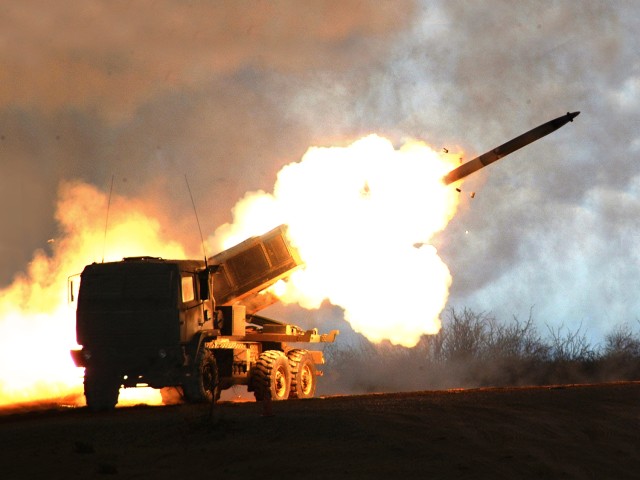The U.S. Army is commemorating its receipt of the 10,000th production delivery of the Guided Multiple Launch Rocket System (GMLRS) --- a 500-pound, precision-guided land rocket which can pinpoint and destroy enemy targets at ranges greater than 70 kilometers. Its pinpoint accuracy reduces collateral damage, service officials said.
To date, 1, 569 GMLRS rockets have been fired in Iraq and Afghanistan by U.S. Army, Marine Corps and U.K. forces, many of them destroying high-value enemy targets such as IED-making facilities and enemy locations.
"We've taken out high-value targets," said Col. David Rice, project manager, Precision Fires Rocket and Missile Systems, Redstone Arsenal, Ala.
"One of the great advantage of GMLRS is it is very precise, its reliable - soldiers and commanders use it with great confidence to attack targets in urban environments where you want to minimize collateral damage."
The reliable, all-weather rocket uses GPS guidance as well as an internal measurement unit (IMU) to hone in on targets from stand-off distances; in some instances the weapon has been used out to ranges exceeding 90 kilometers, Rice said. The rockets are made by Lockheed Martin at a production facility in Camden, Ark.
GMLRS have also been used to successfully destroy emplaced IEDs.
"If you can't get the EOD guys in to take out an IED in time -- you launch a rocket at it and blow it up," said Rice.
Also, the Army is looking at ways to create "scalable effects" with the weapon by varying the size of the rocket's warhead, Rice added.
"When you start talking about scalable effects is you are talking about managing collateral damage. On board the rocket is 200-pound explosive. Maybe the target only requires 50 pounds of that' We're looking at giving commanders more options," Rice said.
The Army is also analyzing "seeker" technology for the GMLRS which would give the weapon the ability to hit a moving target, Rice said.
"The holy grail in the missile and rocket business is going after moving targets. Right now on the front of the rocket there are guidance and control kits. Guidance kits will guide the munition to a specific grid on the earth, whereas a seeker will guide it to a specific target," he said.
The Army could use a seeker for the GMLRS similar to the one used on the now-in-development Joint Air Ground Missile, Rice indicated.
The GMLRS celebration is also recognizing the combat performance of the Army's truck-mounted, mobile rocket launchers -- High Mobility Artillery Rocket System (HIMARS).
"Their operational readiness rate exceeds 97 percent. To our knowledge no launcher has ever refused a fire mission in combat because it is not mission capable. We are trying to keep it that way," said Rice.
Maintaining the launchers requires upkeep of the software and electronics used such as the weapons interfase, fire control panels, processors, memory chips and capacitors, Rice said. A principle challenge is finding ways to offset obsolescence of the electronics.
"We have a robust fire control system but it is written in an old software language. What we are looking at is what can we do to keep it viable for the long term," he said.
The Army is looking at ways to improve crew protections for the HIMARs as well by, among other things, possibly adding more armor to the cab, Rice said.


Social Sharing